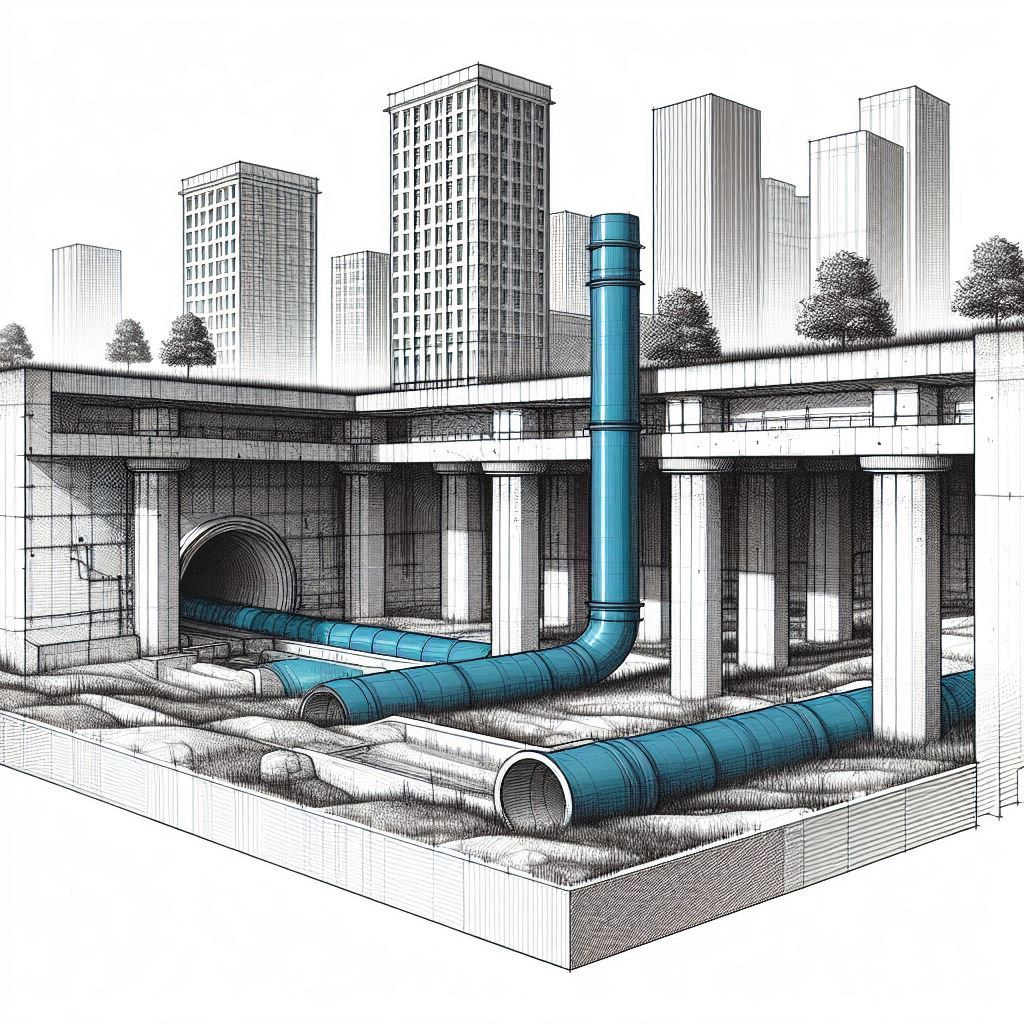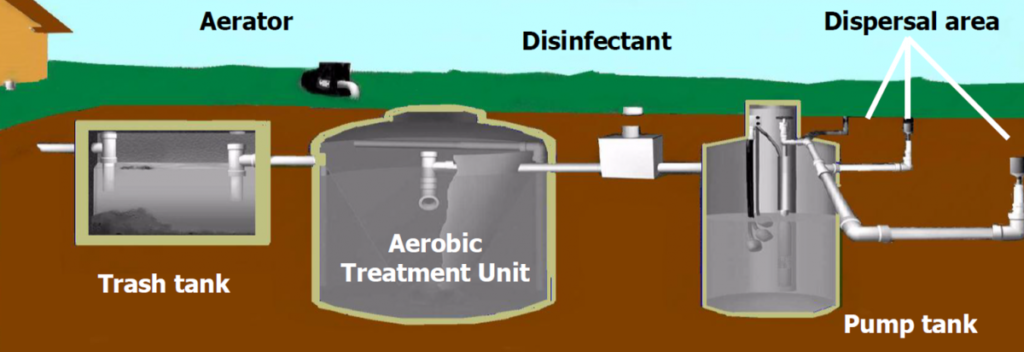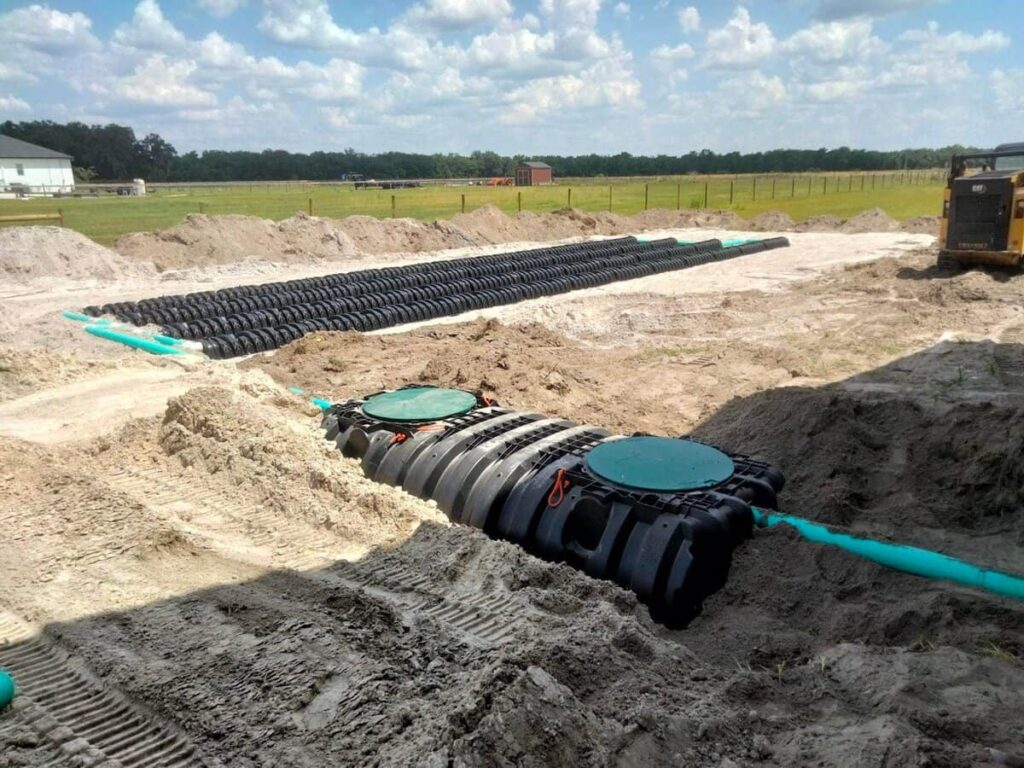Septic & Aerobic Systems: What to know as an Architect

Understanding Septic Aerobic Systems and Leach Fields: A Guide for Architects
Septic Aerobic Systems
Unlike traditional anaerobic systems, they use oxygen to break down organic matter more efficiently. These systems typically include a pre-treatment tank, an aeration chamber, and a disinfection chamber before the treated water is released into the soil.
Benefits of Aerobic Systems:
- Better Treatment: They do a fantastic job of treating waste, resulting in much cleaner effluent.
- Versatile: Aerobic systems can be used in areas with high water tables, poor soil conditions, or close proximity to water bodies where traditional septic systems would fail. Their advanced treatment process allows them to work effectively in challenging environments.
- Environmentally Friendly: They significantly reduce the risk of groundwater contamination, making them a more sustainable choice.
Design Considerations:
- Site Assessment: It's crucial to do soil tests, understand the lay of the land, and check the groundwater table depth.
- Regulatory Compliance: Get to know the local health department regulations, secure the necessary permits, and stick to the required distances from wells, property lines, and water bodies.
- System Design: Make sure the system is the right size for the daily water usage and the number of occupants. The layout should be efficient and allow easy access for maintenance.
- Integration with Building Design: Allocate space for the system components, ensure the plumbing connects seamlessly, and consider using landscaping to screen the components without hindering their function.
Maintenance and Operation:
- Routine Maintenance: Regular inspections, periodic pumping of the pre-treatment tank, and keeping the aerator in good shape are all essential.
- Homeowner Education: Provide clear guidelines on how to use the system properly, a maintenance schedule, and information about alarm systems that can alert homeowners to any issues.
Leach Fields
Leach fields, or drain fields, are crucial for dispersing the treated effluent from septic systems. Proper design is essential to handle the daily water usage and soil percolation rates effectively.
Rules of Thumb for Leach Field Sizing:
Residential Use:
- Daily Water Usage Estimate: On average, a household uses about 70 gallons of water per person per day. Multiply the number of occupants by this figure to estimate total daily water usage.
- Soil Percolation Rate: Conduct a percolation test to find out how quickly the soil can absorb water, measured in minutes per inch (MPI).
- Leach Field Size Calculation:
- Fast Percolation (1-30 MPI): 330-660 square feet per bedroom.
- Moderate Percolation (31-60 MPI): 660-900 square feet per bedroom.
- Slow Percolation (61-90 MPI): 900-1,500 square feet per bedroom.
- Very Slow Percolation (>90 MPI): These soils might need alternative systems.
Commercial Use:
- Daily Water Usage Estimate: Water usage varies by the type of establishment.
- Office Buildings: About 15 gallons per employee per day.
- Restaurants: Around 35 gallons per seat per day.
- Schools: Approximately 15 gallons per student per day.
- Soil Percolation Rate: As with residential use, a percolation test is essential.
- Leach Field Size Calculation:
- Fast Percolation (1-30 MPI): 0.5-1 square feet per gallon per day.
- Moderate Percolation (31-60 MPI): 1-1.5 square feet per gallon per day.
- Slow Percolation (61-90 MPI): 1.5-2.5 square feet per gallon per day.
- Very Slow Percolation (>90 MPI): Alternative treatment methods might be required.
Examples:
- Residential Example: For a 4-person household using 280 gallons/day with a moderate percolation rate (40 MPI), you'll need around 2,340 square feet of leach field for a 3-bedroom house.
- Commercial Example: For a small office building with 20 employees using 300 gallons/day with a moderate percolation rate (50 MPI), about 375 square feet of leach field is necessary.


